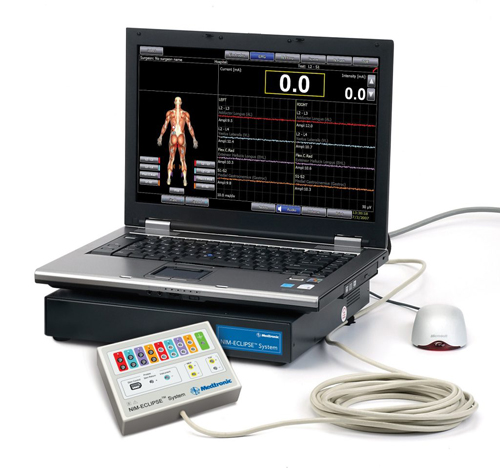No single method adequately covers the complex functions of the spinal cord. The three most common types of neuromonitoring modalities used are:
- Somatosensory Evoked Potentials (SSEPs): This process allows the surgeon to monitor sensory pathways and detect any perioperative neurologic changes.
- Transcranial motor evoked potentials (MEPs): Using electrodes, the signal is measured at predetermined peripheral upper and lower extremity muscle group sites by recording electrodes.
- Spontaneous and triggered electromyography (EMG:- tEMG recordings are obtained when the center of the tulip of the pedicle screw is stimulated, generating a response that is then recorded from the applicable muscle group.
The following spinal procedures benefit most from neuromonitoring:
- Posterior cervical and thoracic decompressions
- Intradural spinal cord surgery (e.g. intradural intra and extramedullary tumors)
- Spinal Deformity Surgery
- Complex Revision Surgery








